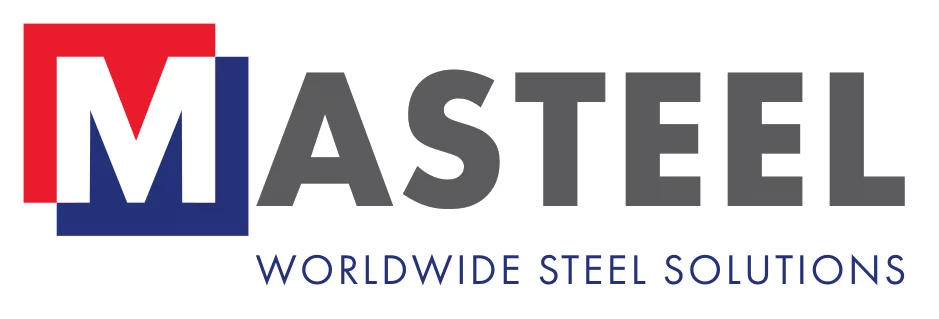Pressure vessels experience some of the harshest industrial conditions, from rapid pressure fluctuations and thermal cycling to corrosive environments and mechanical shock, but are still expected to maintain structural integrity and reliable performance throughout their service life. These operational demands subject the pressure vessel to cyclic loading, repeated stress variations over time, which can weaken the material and lead to fatigue. Fatigue does not cause failure quickly, instead it builds gradually, silently accumulating until a crack appears, often without warning. The steel chosen for a pressure vessel can determine whether or not it can withstand the effects of cyclic loading or succumbs to fatigue during extended service. This makes it essential to know how different grades of pressure vessel steels perform under cyclic loading to ensure long-term structural reliability and safety.
ASTM A285 / ASME SA285 (Grade C)
- Overview: A carbon steel grade with a relatively low yield and tensile strength, making it suitable for applications involving low stress and minimal performance demands.
- Pressure Vessel Applications: Commonly found in low-pressure, non-critical vessels such as atmospheric storage tanks and basic process vessels.
- Advantages: Offers excellent formability and weldability, and is an economical choice for basic pressure containment.
- Fatigue Behavior under Cyclic Loading: Because of its lower mechanical strength, ASTM A285 / ASME SA285 exhibits limited resistance to cyclic fatigue. It is best reserved for service conditions involving minimal pressure fluctuations or infrequent start-stop cycles.
ASTM A516 / ASME SA516 (Grades 60, 65, 70)
- Overview: Normalised fine-grain carbon steels that balance strength, toughness, and weldability, with Grade 70 offering the highest strength.
- Pressure Vessel Applications: Widely used in boilers and pressure vessels across oil, gas, and chemical industries.
- Advantages: Deliver excellent notch toughness, strong weld performance, and compliance with major global pressure vessel codes.
- Fatigue Behavior under Cyclic Loading: ASTM 516 / ASME SA516 grades exhibit good fatigue performance due to their balanced mechanical properties and fine-grain structure. All three grades perform well under fluctuating pressure and thermal loads, and higher grades generally provide greater resistance in high-cycle fatigue applications like steel drums and thermal storage vessels.
ASTM A537 / ASME SA537 (Class 1 & 2)
- Overview: Steel supplied in a heat-treated condition. Class 1 is normalised, while Class 2 is quenched and tempered to achieve higher strength.
- Pressure Vessel Applications: Utilised in high-pressure systems, like reactors and gas processing units.
- Advantages: Provides higher yield and tensile strength than A516, along with good impact resistance at lower temperatures.
- Fatigue Behavior under Cyclic Loading: With their refined microstructure and increased strength from heat treatment, ASTM A537 / ASME SA537 steels show superior fatigue resistance, especially in Class 2. These steels are an excellent choice for pressure vessel systems involving frequent start-ups and pressure variations.
ASTM A553 / ASME SA553 (Types 1 & 2)
- Overview: A high-performance nickel-alloy steel that displays excellent mechanical strength and fracture toughness. It is engineered for structural reliability in extremely low-temperature environments.
- Pressure Vessel Applications: Suitable for low-temperature vessels, including LNG storage, cryogenic tanks, and cold gas separation units.
- Advantages: Its high nickel content improves low-temperature fracture toughness and resistance to brittle failure.
- Fatigue Behavior under Cyclic Loading: Designed for demanding thermal and mechanical cycling, ASTM A553 / ASME SA553 delivers strong fatigue performance. Its high toughness enables long fatigue life, particularly in environments with frequent temperature fluctuations.
ASTM A353 / ASME SA353
- Overview: Another 9% nickel steel grade tailored for cryogenic pressure vessels.
- Pressure Vessel Applications: Used in low-temperature chemical reactors and storage vessels for liquefied gases.
- Advantages: Delivers excellent toughness, weldability, and ductility in sub-mero environments.
- Fatigue Behavior under Cyclic Loading: ASTM A353 / ASME SA353 provides exceptional fatigue performance in cold service, where thermal cycling and pressure changes occur frequently.
EN 10028 (P295GH, P355NL1, P460NH)
- Overview: A family of European steels designed for pressure vessels subjected to elevated temperatures and fluctuating pressures.
- Pressure Vessel Applications: Typically applied to European-standard pressure vessels, heat exchangers, and steam boilers.
- Advantages: Features thermal stability and strength consistency at high temperatures.
- Fatigue Behavior under Cyclic Loading:
- P295GH: Balances strength and toughness, delivering reliable fatigue performance under moderate cyclic loading conditions.
- P355NL1: Provides enhanced fatigue resistance under cyclic loading, particularly in block loading and cumulative damage scenarios.
- P460NH: Exhibits high strength and toughness, ensuring its place in pressure vessels subjected to high-cycle fatigue and frequent pressure fluctuations.
Find a Pressure Vessel Steel That Suits Your Fatigue Demands
Cyclic fatigue is a critical design consideration in pressure vessel engineering, influencing not just material selection but also long-term reliability and maintenance planning. Selecting the right pressure vessel steel grade based on fatigue demands, environmental conditions, and expected stress cycles can significantly extend operational life and reduce downtime. With an extensive portfolio of pressure vessel steels, Masteel can help engineers find a material that matches their specific fatigue performance requirements. From cryogenic grades like ASTM A553 / ASME SA553 and ASTM A353 / ASME SA353 to high-strength options such as ASTM A537 / ASME SA537 and EN 10028 P460NH, every steel supplied is supported by technical expertise, global compliance, and fatigue resistance data. Talk to our team today to identify the ideal pressure vessel steel for long-term fatigue performance.
